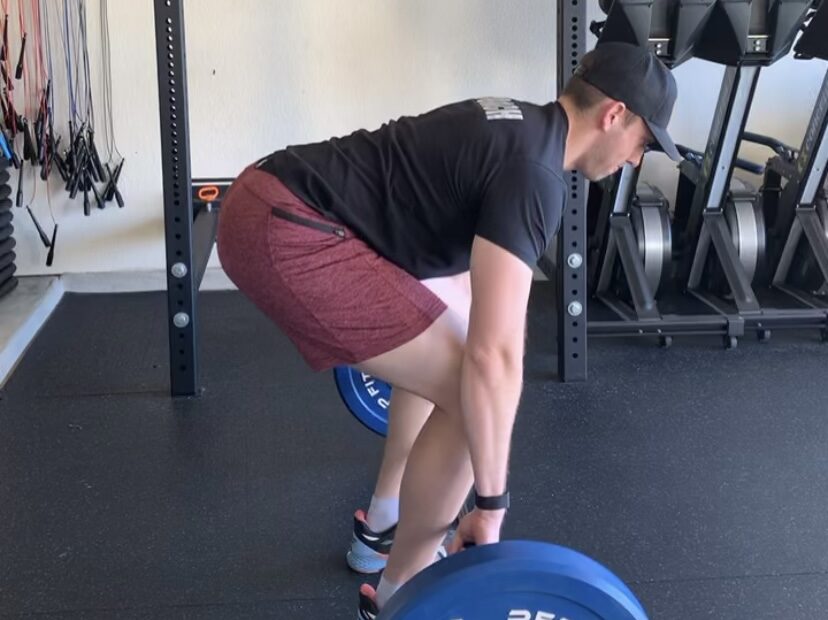I want to start by saying you should not be getting a huge pump or have pain in your lower back from deadlifts. So if you are this post is for you. The deadlift exercise is suppose to target your hamstring, glutes and is a core exercise meaning my core needs to be engaged throughout. There are two main reasons why someone will get injured deadlifting.
The two main reasons why injury occurs
Number one too much load too quickly, most times when someone has pain after a deadlift workout it is because they added too much weight that they were not ready for. In order to increase strength in the deadlift you need to progressively overload the exercise that means add more weight with the same number of reps or add more reps at the same weight but this does not happen over night and takes time. Another common fault is increasing volume of deadlifts too quickly. For example going from deadlifting once a week to deadlifting 3 times a week puts you at higher risk for injury because your body and muscles are not ready for that much volume. The second reason for injury is poor form. This can occur because we believe we are performing the exercise properly but may not be or we are not sure of the proper movement in the first place. Below we will discuss more about mechanics and the common faults with the deadlift.
Three common technique mistakes
1. Stripper butt or knee extending too early. This is a common error that I see often due to most people having a weeker posterior chain (back side of your body) because we sit often as a society. In general our back side is weaker so when we are doing exercise or lifting something we shift our weight to our quads or anterior chain of the body. This is why extending knees is common. You can see in the picture above how the fault looks, this is an exaggeration and will not look that bad most times. The problem of this is that we are creating more sheer force on our spine due to the bar being away from the body creating a longer lever on on low back. If we continue this pattern long term injuries in the lumbar spine are common. One easy cue to help with this is when we are going from the ground to hip we pause at the knees forcing us to feel that our knees are still there before we extend the rest of the way up.
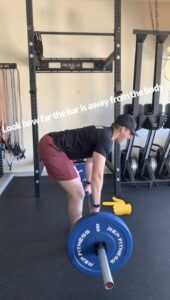
2. Rounded shoulders, lack of engagement of the upper body. The deadlift may be a lower body exercise but that does not mean that the upper body is not involved. As you can see in the picture below when we do not engage through the upper body down then it will lead to rounding of the shoulders and rounding of the lower back. While some flexion of the lumbar spine is normal excessive lumbar flexion leads to more sheer force on the spine and possible injuries. The best way to improve this fault is to make sure when we are setting up that we are squeezing the bar back into us and squeezing are arms into us like we have oranges in our armpits and we are trying to squeeze all the juice out. Also, working on exercises like bent over rows will strengthen our upper back. It is important the upper back and lats are strong so the upper and lower body are at the same level of strength.
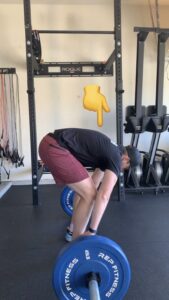
3. Overextension at the top. This is a very common mistake that put excess pressure on the spine into extension which can lead to many spinal issues. The most common reason that people over extend at the top is that they do not know how to engage there glutes in the hip hinge motion and use the back to complete the movement. When we are finishing the deadlift we want to make sure that we are squeezing the glutes at the top not finishing by pulling our back up. Instead of thinking about the back leaning back think about bring the hip forward by squeezing the butt at the top. A good way to work on this is adding in glute bridges or hip thrust exercises in to your normal strength training. These exercises when done properly will force you to engage glute and finishing the top of the movement with glutes squeezed and hips extended.
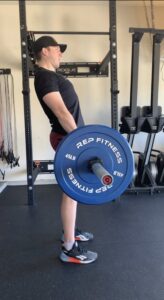
Proper mechanics
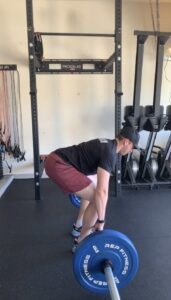
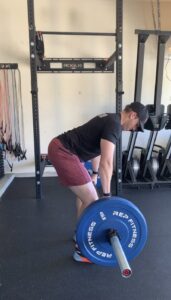
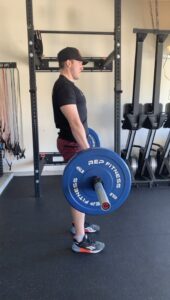
In the pictures above you can see the proper set up and execution of a deadlift. When you set up for a deadlift the weight should almost come up off the ground before you even start to lift. This means you are fully engaging the backside and all the muscles prior to lifting. Start by standing tall with shins against bar. Then reach down to the bar with your normal grip width on the bar then pull yourself down until you feel your back flatten out, making sure you squeeze through your arms and press through the floor. As you lift this about pushing the ground away from you not pulling the bar up. The movement should start with the knees extending until the bar is at your knees then once you pass the knees you think about squeezing the butt and sending the hips forward. The movement end with shoulders in line with hips and butt squeezed. Reverse the movement back down by sending the butt back until you hit your knees then bend your knees. Working on controlling the weight down rather then bouncing in order to get stronger.
Think about these cues next time you are doing deadlift!
Cody Luttrell PT, DPT
